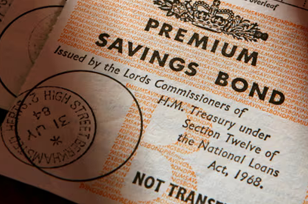
Parents
What is Statutory Maternity Leave?
Statutory Maternity Leave in the UK is one year. This means that you are entitled to one year off work, regardless of how long you have been in the job, by law. You have to take at least 2 weeks off work after giving birth, but you do not have to remain off for the rest of the allowed year. You can begin your Maternity Leave from the 11th week before your due date and if baby arrives earlier than expected it starts the day after delivery.
What is Statutory Maternity Pay?
You are entitled to 52 weeks of Maternity Leave, but only 39 weeks of statutory Maternity Pay. This is the smallest amount an employer must pay you, by law.
Who can claim Statutory Maternity Pay?
Anyone who is pregnant, earns a weekly average of £112 and has been with their current employer for 26 weeks (minimum) when they are in the 15th week before the due date.
How much is it?
The amount you receive depends on which week of Maternity Leave you are in:
- First 6 weeks of Maternity Leave, Maternity Pay is 90% of your weekly income, before tax
- Next 33 weeks of Maternity Leave, Maternity Pay is either £139.58 per week or 90% of your weekly income – whichever is the smaller amount
- Next 13 weeks of Maternity Leave – No Maternity Pay is due
These are the government’s statutory amounts that employers must pay. Your employment contract may entitle you to more pay, this varies between employers.
What is Maternity Allowance?
This is an alternative government allowance for women who are pregnant for those who do not meet the eligibility criteria for Maternity Pay or are self-employed. You can claim it for 39 weeks, it starts from the 26th week of pregnancy and the earliest you can claim it is 11 weeks before your due date.
Who is it for?
You can claim Maternity Allowance if, in the 66 weeks prior to your due date, you were:
- Earning less than an average of £112 per week
- In work for at least 26 of those 66 weeks and earning £30 or more per week for any 13 of those 26 weeks.
If you have not earned enough, worked for the right number of weeks or are unemployed then you cannot claim the Maternity Allowance.
How much is it?
This is a tax free allowance and your Class 1 NICs will also be paid automatically if you claim this benefit. It is paid at a rate of 90% of your weekly earnings, capped at £139.58 (2016-17 financial year).
What is it?
Paternity Leave is paid time you are allowed to spend away from work just after your partner has a baby, if you are employed. This rarely applies to agency or temporary employees. You must take your 2 week entitlement sometime between the day of baby’s arrival and 56 days later. This does not come out of your holiday leave, it is extra time specifically so you can support your partner and bond with new baby.
Who is eligible?
In order to get Statutory Paternity Leave you must be working at you place of employment for a minimum of 26 weeks by the end of the 15th week before the due date. In the case of adoptions, this is by the end of the week that you are informed you are successfully matched.
Your personal circumstances must also be one of the following criteria:
- You are the baby’s mother’s husband or partner (same-sex parents and straight couples)
- You are the baby’s biological father
- You are adopting the baby or are the recipient parent of a baby using a surrogate mother
What is Statutory Paternity Pay?
This is the minimum amount you must be paid while on Paternity Leave. It is either 90% of your weekly average income or £139.58 per week, whichever is the lower figure. Your employer pays this after taking off NI and tax.
Who is it for?
You need to have earned a minimum of £112 per week before tax. You must have been working for your employer for 26 weeks (without any breaks in between) before the end of the week you get an adoption match or the 15th week before baby’s due date.
If you are having a baby or adopting a child you may be entitled to Shared Parental Leave and Share Parental Pay. This means that you and your partner can take blocks of leave, in between periods of work, instead of the whole amount consecutively.
Who is eligible?
Shared parental leave can be shared with: your civil partner, married spouse, joint adopter, your partner that lives with you and the child, the other parent of the child. One of you must be allowed to claim maternity pay or leave, Maternity Allowance, or adoption pay or leave. There are other rules specifying the length of time you have been employed and how it relates to the due date, or matched date if you are adopting. These are very similar to the maternity and paternity rules.
Who can claim Shared Parental Pay?
You can apply for statutory Shared Parental Pay if you can claim Statutory Maternity Pay or Statutory Adoption Pay. Or, if you are eligible for Statutory Paternity Pay and your partner can claim Statutory Maternity Allowance.
How much is it?
Shared Parental Pay is either 90% of your average weekly income, or £139.58 – whichever is the smallest number.
What is it?
Child tax credit is an annual amount of money given to parents/carers, to go towards the expense of bringing up a child. It is part of the benefits system.
Who can claim Child Tax Credit?
Any adult who has legal responsibility for a child can claim Child Tax Credit. This money is available until the child reaches 16 years old or, if they are in training or education, until they are 20.
How much is Child Tax Credit worth?
This is calculated on an individual basis and many different factors are taken into consideration. For example; how many children live with you, if any of your children have a disability and your household income.
Does it apply to every child in my family?
The rules on this changed in April 2017, from this date, you will only be entitled to Child Tax Credit for your first two children – unless you have had a multiple birth (triplets, quads etc.).
But this does not mean a cut for all those families already claiming for more than two children – your Child Tax Credit will remain the same.
How to claim Child Tax Credit
You need form TC600 to claim Child Tax Credit, which you can request online, or phone the Tax Credit Helpline on 0345 300 3900. Once you have sent the form to HMRC, they will calculate your entitlement and let you know. You get your Child Tax Credit paid straight into your bank account, monthly.
What is it?
Universal Credit is one of the main objectives of the government’s welfare system overhaul. The idea is to streamline a number of benefits into one ‘universal’ payment.
It will amalgamate and replace:
- Child Tax Credit
- Housing benefit
- Working tax credit
- Income support
- Income related employment and support allowance
- Income based jobseeker’s allowance
Will this mean smaller payments overall?
There is no clear cut answer to this question, as it will continue to be calculated on an individual basis.
All that has been stated by the government is that you will not receive a smaller payment at the first point of the switchover, as long as your circumstances remain the same. But in subsequent years this amount will fluctuate as your situation changes. For example, if you become part of a couple, or separate from a partner.
What is it?
Child Benefit is another payment from the government available to those rearing children.
Who can claim?
Any adult who is responsible for raising a child until they are 16 can claim for Child Benefit. This payment continues until the child is 20, if they are in education or training.
If your family has a partnership of two adults, only one of them can claim Child Benefit. If one of the adults has an annual salary of over £50,000, then partial or full Child Benefit will have to be repaid as additional Income Tax.
How much is Child Benefit worth?
The amount of Child Benefit available changes every year. This complicates calculating your overall household budget.
In 2016-17, it is £20.70 per week for the eldest or an only child and £13.70 per week for every other child in the same family.
How to claim Child Benefit
You need to complete a CH2 claim form, which you can download from GOV.UK.
You may be lucky enough to work for one of the few employers who either pay for external childcare, or provide a workplace nursery for their employees. But Childcare Vouchers are the most common form of ‘Employer Supported Childcare’.
What are Childcare Vouchers?
Childcare vouchers are direct support from your employer to assist with the cost of childcare. It is not direct childcare provision and you decide which provider to use, as long as they are officially registered and have Ofsted approval.
The vouchers themselves may be in addition to your pay, or given instead of (part of) your pay. This ‘salary sacrifice’ works out financially well for some families because the vouchers are exempt from National Insurance and income tax payments. On the other hand, claiming Childcare vouchers can affect the amount of Child Tax Credit you receive. You must carefully do your own calculations before committing to the Childcare Voucher scheme, to make sure you are doing what’s right for you.
Who are Childcare Vouchers for?
It is up to your employer to offer the Childcare Voucher scheme. They do not have to use the scheme. It benefits employers because it can save them money on their National Insurance bill.
If they do choose to offer Childcare vouchers, then they are open to all their employees as long as any salary sacrifice keeps their salary over the national minimum/living wage figure.
They apply to childcare costs that you have for your own biological child, step child, or child that lives with you and you are legally responsible for. Both adult partner of a family can claim Childcare vouchers at the same time.
How much are Childcare Vouchers worth?
This is figure does change and it is tied to your income tax band.
Basic Rate taxpayer – 20% income tax – £243 Childcare vouchers per month
Higher Rate taxpayer – 40% income tax – £124 Childcare vouchers per month
Additional Rate taxpayer – 45% income tax – £110 Childcare vouchers per month
It is important to note here, that ‘salary sacrifice’ is an alteration to your employment contract and this can change other aspects of your financial life, like pensions, redundancy and maternity/paternity pay. You need to consider all of these factors while you are making your decision.
What is the Married Persons Allowance?
This is a new tax relief that was introduced in April 2015, with the intention of reducing the income tax bill in households where one partner doesn’t use up their Personal Allowance. This Personal Allowance amount can be transferred to the other taxpaying partner, currently seeing an annual tax saving of £220.
Who is it for?
As the title suggests, this is for people who are married or in a civil partnership. One partner must be in at least the Basic Rate income tax bracket and the other not working.
How do I apply?
You can go through the application procedure online at GOV.UK. The saving will either be applied through your tax code or the self-assessment system, if the higher earning partner is self-employed. This will become automatically applied unless you cancel it because your financial or personal circumstances change (e.g. divorce).
What are cashback sites?
Shopping through cashback sites, like Quidco and Topcashback, can get you a discount when you spend money at selected retailers.
How do they work?
You start by registering with a cashback site, then search and click through to the shop you want from there. In other words, instead of going directly onto the shop’s website, you enter it through the cashback site in order to make the saving.
What’s good about them?
They usually have free registration and are quite simple to navigate. The discount percentages vary from quite small (but still useful!), to reasonably generous. The cash back is securely paid into your bank or PayPal account.
Are there any pitfalls?
Well, these sites exist to encourage your spending, so it’s important to remember that it’s not a saving if you don’t need, or want, the actual product.
It has been widely noted that it can take some time to see the money back in your bank account, if it is not automatically tracked. It’s also worth knowing that retailers take on different contracts with different cashback sites; so it may be worth registering with a few to suss out the best deals.
Top Tip
Some thrifty shoppers have a separate email account that they just use for discount shopping communications. This keeps all the deal offers nicely organised and separate from your day-to-day email correspondence.
What are loyalty points?
Most shops now have a loyalty card scheme, through which customers can earn points which translate into money off future purchases. For example: Sainbury’s Nectar card, Boots’ Advantage card and the Tesco Clubcard. They can usually be used for both online and in-store shopping.
Are they good value?
If you shop somewhere regularly, it’s always worth being part of their loyalty scheme because some money off is better than no money off! Each retailer’s scheme has its own quirks and deals, so you need to read the rules of whichever one you are part of. Nearly all of them have straightforward points earning and particular times when you can earn more, or they are worth more.
For example, 1,000 Tesco Clubcard and Boots Advantage points earns you £10.00 to spend in store, but 1,000 points on your Nectar card gets you £5.00.
Top Tip
Retailers are always looking to get you to spend your money with them and Loyalty points are just another way of doing this. Their pricing strategy incorporates all of these selling techniques. Loyalty schemes also give marketing departments a regular stream of extremely valuable information about our shopping habits.
Make sure that you aren’t buying items from a particular store, just because there’s a loyalty point boost that week, when you save yourself actual cash by just popping to a neighbouring shop that sell the same items more cheaply.
Given the extortionate cost of quality childcare, many families find it more cost effective to have one parent stay at home while their children are of pre-school age. But that doesn’t mean that you can’t continue earning. There are several earning options that provide the flexibility necessary to fit around childcare. Just consider your physical circumstances (space, resources), skills, qualifications and experiences and think about how you could monetise them.
For example:
Handmade or crafted goods
If you have the skills to make a product, you no longer need to shell out for an actual shop premises. Online marketplaces and auction sites are a great way to get your goods to you customers. Ebay and Amazon are the obvious big-hitters, with Not on the High Street and Etsy being other major success stories. There are smaller niche sites that might be appropriate for you, like Folksy that is exclusively for UK handmade items.
Catering and cakes
Where there’s a celebration, there’s usually a cake! So if you caught the Bake Off bug, maybe there’s some money to be made from the many birthday treats in regular demand. If you have even wider culinary skills, you may be interested in stepping into the world of dinner party or office lunch catering.
YouTube, Blogging, Vlogging, Instagramming
On any social media platform, if you attract followers, you become very interesting to advertisers. The benefits could be products to test and recommend, or straightforward cash for advertising space.
Tutoring
If you play an instrument or speak any languages other than English, then you could find yourself with year-round work as a tutor. You decide whether you hold lessons at your own home, or visit your students. Bear in mind that there are plenty of adults who want to learn, as well as school-age children. You would need to prove your own skill by qualification, background (e.g. more than one language in your family, living in another country) or demonstration (of instrument). You do not need a formal teaching qualification to deliver this kind of service.
If you have further education qualifications or certification in the field of Education, then you could offer tutoring in particular school subjects. This becomes more in demand before testing/examination periods, when you could offer specific revision sessions. Depending on your location, there is some demand for tutors to prepare children for entrance exams to some, private schools.
Caring for animals or others’ children
Dog walking and pet sitting are two possible services that can flexibly fit around your lifestyle. As does child minding; although you need to make yourself aware of all the relevant regulations around looking after children.
Mystery shopper
Well, if you’re shopping anyway…! This could be your chance to try on the life of a spy for a few hours a week – only in the comparatively safe world of retail.
Avon calling
There are quite a few different companies who have followed Avon’s lead like, Younique, Ann Summers and the Body Shop. Social media makes it easier to connect with customers now and you make commission on whatever you sell.
Space
Do you have a garage that you could rent to someone as storage? Maybe you could get a lodger in your spare room. Some people have even been known to rent out their parking space. It just takes a slight change of perspective to view what you have as a potential money-earner.
Working from home
There are loads of opportunities to make money working online, from the comfort of your own home. Completing surveys, participating in customer research or joining an online work agency that has a variety of administrative, proofreading, editing and writing work are just some of your options. You may be able to find opportunities for remote working in the field you just left.
Check out our other Money calculators and guides to make sure that you are maximising your cash.
You might also be interested in...












